
The Northeast Frontier Railway is one of the 19 railway zones of the Indian Railways. It is headquartered in Maligaon, Guwahati in the state of Assam, and responsible for operation and expansion of rail network all across Northeastern states and some districts of eastern Bihar and northern West Bengal.
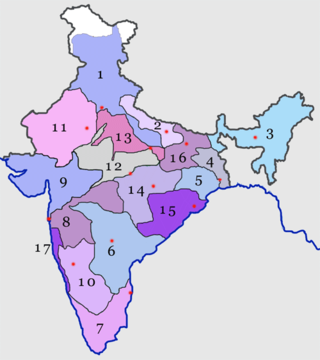
The Eastern Railway is among the 19 zones of the Indian Railways. Its headquarters is at Fairley Place (Kolkata) and comprises four divisions: Howrah, Malda, Sealdah, and Asansol. Each division is headed by a Divisional Railway Manager (DRM). The name of the division denotes the name of the city where the divisional headquarters is located. Eastern Railway oversees the largest and second largest rail complexes in the country, Howrah Junction and Sealdah railway station, and also contains the highest number of A1 and A Category Stations like Howrah, Malda Town, Sealdah, Asansol, Kolkata, Durgapur, Barddhaman, Rampurhat Junction, Bhagalpur,Jamalpur, Jasidih, Bandel and Naihati. Eastern Railways operates India's oldest train, Kalka Mail.

The North Eastern Railway is one of the 18 railway zones of Indian Railways. It is headquartered at Gorakhpur.

The South Eastern Railway is one of the 19 railway zones in India. It is headquartered at Garden Reach, Kolkata, West Bengal, India. It comprises Adra railway division, Chakradharpur railway division, Kharagpur railway division and Ranchi railway division.

The East Indian Railway Company, operating as the East Indian Railway, introduced railways to East India and North India, while the Companies such as the Great Indian Peninsula Railway, South Indian Railway, Bombay, Baroda and Central India Railway and the North-Western Railway operated in other parts of India. The company was established on 1 June 1845 in London by a deed of settlement with a capital of £4,000,000, largely raised in London.
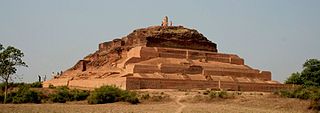
According to the epic Mahābhārata, Bareilly region (Panchala) is said to be the birthplace of Draupadi, who was also referred to as 'Panchali' by Kṛṣṇā. When Yudhishthira becomes the king of Hastinapura at the end of the Mahābhārata, Draupadi becomes his queen. The folklore says that Gautama Buddha had once visited the ancient fortress city of Ahicchattra in Bareilly. The Jain Tirthankara Parshva is said to have attained Kaivalya at Ahichhatra.

The Howrah–New Delhi main line is a railway line connecting Delhi and Kolkata cutting across northern India. The 1,531 km (951 mi) railway line was opened to traffic in 1866 with the introduction of the "1 Down/2 Up Mail" train.

The Eastern Bengal Railway was one of the pioneering railway companies that operated from 1857 to 1942, in the Bengal and Assam provinces of British India.

The Assam Bengal Railway (ABR) was one of the pioneering railway companies in British India. Headquartered in Chittagong, it functioned from 1892 to 1942.

Bareilly Junction railway station is a railway station serving Bareilly city in Uttar Pradesh. It is an important station as well as the headquarters of Izzatnagar railway division of the North Eastern Railway zone & Moradabad railway division of the Northern Railway zone. It lies on Lucknow–Moradabad line and Lucknow-Sitapur-Lakhimpur-Pilibhit-Bareilly-Kasganj Line provides a stop for most trains passing through. Bareilly Junction used to serve both broad and metre gauge, Bareilly Junction was connected to Lucknow by both Broad Gauge and Meter Gauge, Broad Gauge was connected to Lucknow via Tilhar, Shahjahanpur, Hardoi. On the other hand Meter Gauge was connected to Lucknow via Pilibhit-Mailani-Lakhimpur-Sitapur, but now the metre gauge is converted into broad gauge.
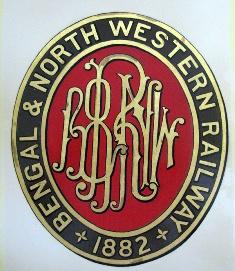
The Bengal and North Western Railway was owned and worked by the Bengal and North Western Railway Company. The Bengal and North Western Railway was merged into the Oudh and Tirhut Railway on 1 January 1943.
Tirhut Railway was originally owned by the Raj Darbhanga and later by the provincial government. Its ownership was later transferred to the Government of India which operated it as part of the Indian State Railways from opening to late 1886, as the Tirhoot Railway from late 1886 to 30 June 1890 and by the Bengal and North Western Railway from 1 July 1890. Tirhoot Railway absorbed the Segowlie-Raxaul Railway is around 1920. The Tirhut Railway was merged into the Oudh and Tirhut Railway on 1 January 1943.

Rohilkund and Kumaon Railway (R&KR) was a metre gauge railway in India covering a total network of 592 miles (953 km). It was owned and worked by the Rohilkund and Kumaon Railway Company. The Rohilkund and Kumaon Railway was transferred to the Government of India and merged into the Oudh and Tirhut Railway on 1 January 1943.
Mashrak–Thawe Extension Railway was owned by the Government of India and worked by Bengal and North Western Railway.
The Lucknow–Bareilly Railway or Lucknow–Bareilly State Railway was owned by the Government of India and worked by the Rohilkund and Kumaon Railway. The Lucknow–Bareilly Railway was formed on 1 January 1891 by merger of Lucknow–Sitapur–Seramow Provincial State Railway and Bareilly–Pilibheet Provincial State Railway. The Lucknow–Bareilly Railway was merged into the Oudh and Tirhut Railway on 1 January 1943.

The Moradabad–Ambala line is a railway line connecting Moradabad in the Indian state of Uttar Pradesh and Ambala Cantonment in Haryana. The line is under the administrative jurisdiction of Northern Railway.

The Howrah–Gaya–Delhi is a railway line connecting Howrah and Delhi cutting across Indo-Gangetic Plain and a comparatively small stretch of the line crossing over the Chota Nagpur Plateau. It covers a distance of 1,452 kilometres (902 mi) across, West Bengal, Jharkhand, Bihar, Uttar Pradesh and Delhi. The Grand Chord is a part of this line and as such is referred to by many as Howrah–Delhi line.
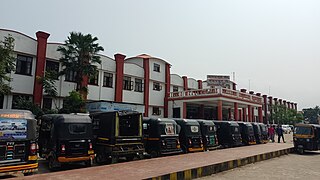
Badarpur Railway Station serves the Indian city of Badarpur in Assam. It belongs to Lumding railway division of Northeast Frontier Railway of India. It is located at Cachar district in the state of Assam. It is one of the oldest station of India built in 1898. The Station connects Badarpur to other regions of Barak Valley as well as many parts of India. Badarpur railway station is also the largest and most important railway station in Barak valley and south Assam region.
Jiribam railway station serves Jiribam town and belongs to the Lumding railway division of Northeast Frontier Railway. It is the first railway station in the state of Manipur, India.
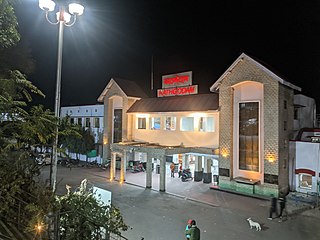
Kathgodam railway station is railway station located in Kathgodam town near Haldwani, just 35 km from Nainital Town in Nainital district of Uttarakhand State of India.















